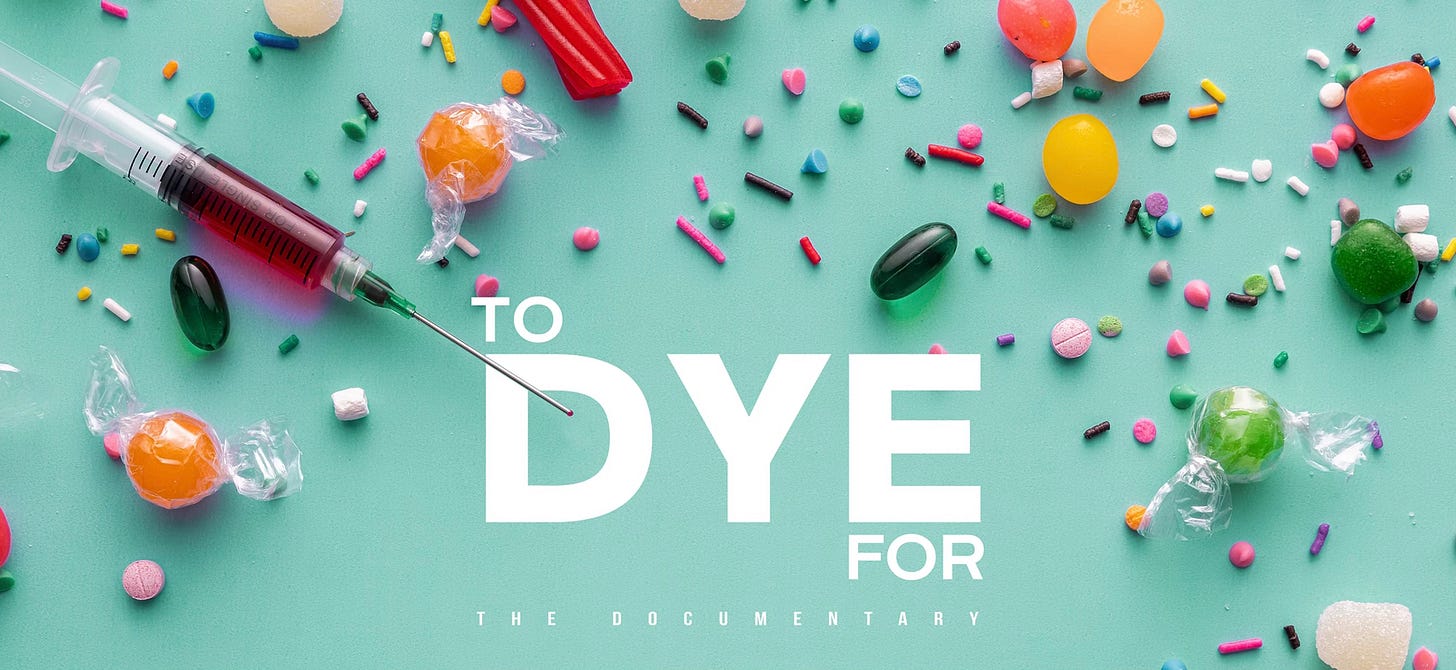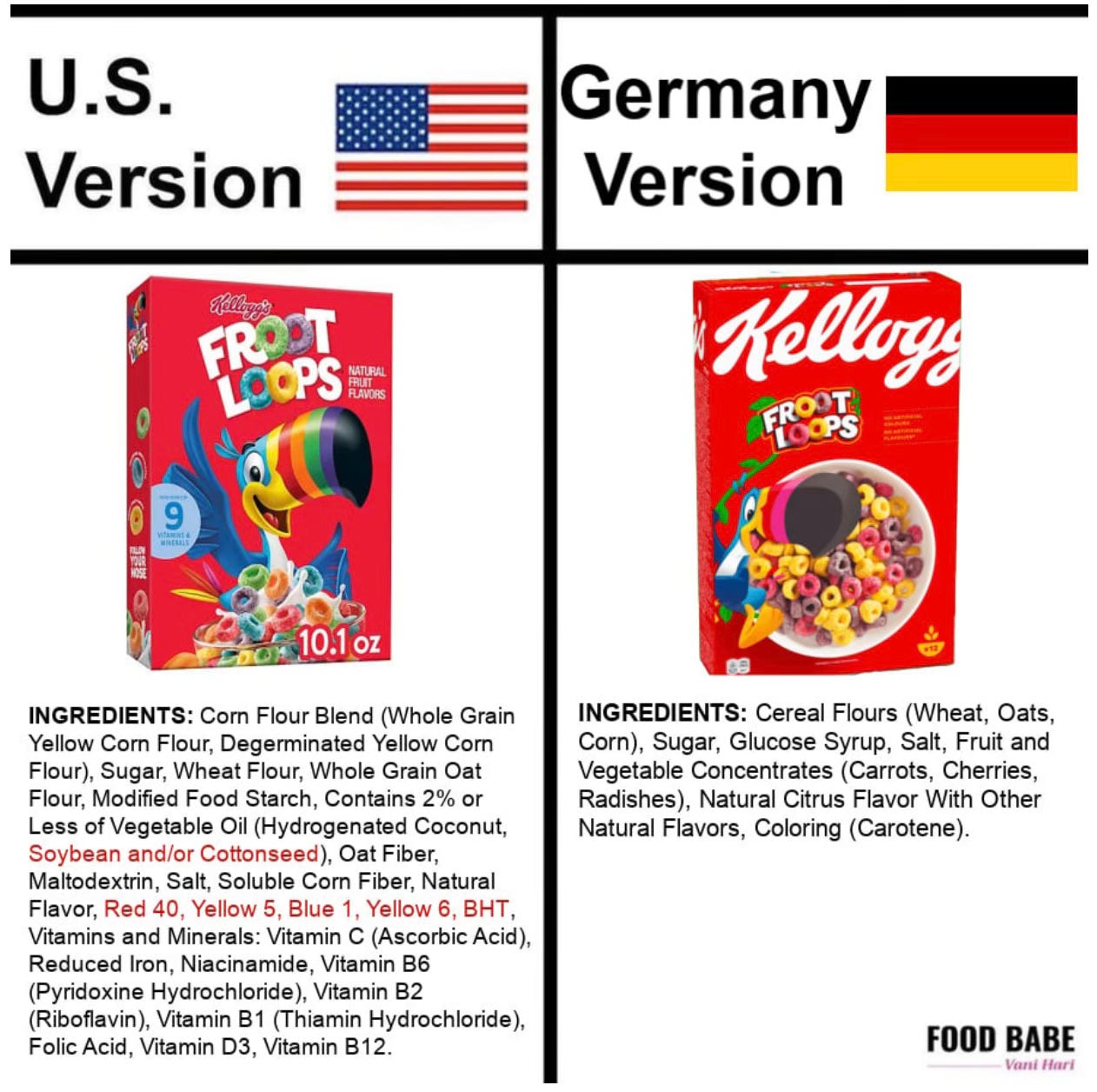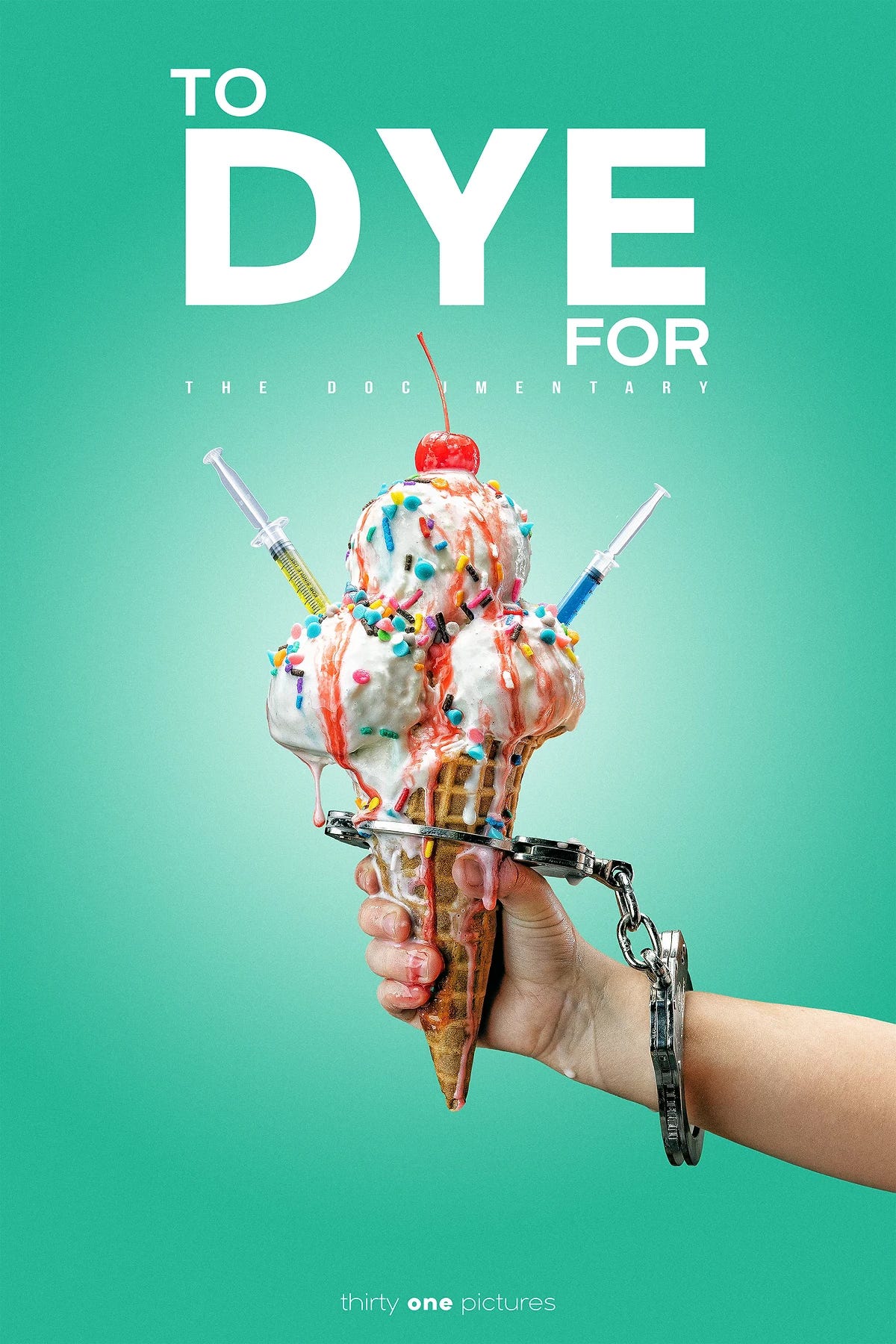How ‘To Dye For: The Documentary’ is Sparking Change in the Food Industry
Why these colors of the rainbow aren’t so “pretty”
Artificial Food coloring is used in processed, artificial junk foods to make them look brighter and more enticing. They use food coloring in things you wouldn’t even think of like chips and savory snacks to give it a nice bright color. Think Cheetos. They even put food coloring in sodas, drinks, pickles, gelatin desserts, peanut butter, cereals and vitamins. It’s hard to escape it if you are eating the SAD DIET (standard American diet). In the United States, there is approximately 120 million pounds of food coloring that is consumed every year (Healing Foods - Michael Murray). When you consider that there is food dye in things like pickles, chips and cereal, perhaps you aren’t even going a day without added synthetic food coloring that causes damage to your body. The three most widely used dyes (Red 40, Yellow 5 and Yellow 6) are all contaminated with known carcinogens. And, on top of that, Red 3 (another dye) approved to be in our foods, yet the FDA has also acknowledged it to be a carcinogen for years. Carcinogens are cancer-causing. They are substances that are capable of causing cancer in living tissue. Red 3 is a known carcinogen, and it’s in your cereals, baked goods, red candies, sodas, snacks and more.
The US Food and Drug Administration (FDA) has approved food dyes “to make foods look pretty.” Over the past 50 years synthetic dyes being used in foods have increased by 500% which is interesting when you see that at the same time, behavioral problems in children, such as aggression, attention deficit disorder (ADD), and attention-deficit/hyperactivity disorder (ADHD) has also increased. (PubMed) Food dyes like as Red 40, Yellow 5, and Yellow 6, have been known to contribute to hyperactivity, impulsivity, and attention problems in children. In response to this growing concern about food dyes some countries like those in the EU, have required warning labels on products containing synthetic dyes, while others have banned their use altogether. In the U.S., although food dyes are still widely used and overly consumed, there is increasing awareness and debate around their safety. In some states, like California, they’ve begun implementing restrictions in schools but it’s not enough.
There are natural food dyes out there that work great but sadly, many companies wont use natural food coloring (made from plants) because it’s more expensive and you can’t always achieve specific colors and/or brighter colors. Just a good ol’ example of PROFITS OVER PEOPLE…
There are so many companies making food products for the USA and the same exact product for another country but with different ingredients. For example: Kelloggs makes Froot Loops and the Foot Loops that they make for Germany has no artificial dyes and is colored naturally. In the USA, Front Loops contain 4 different artificial dyes. Same company, same cereal but two different ingredient lists. Natural food colorings are made from nature. Beets, spirulina, turmeric are used to make red, green and yellow and when mixed together they can also make orange, blue, purple, pink and other fun colors, too. They are becoming more and more popular in the natural products industry, however a few brands are still opting for the artificial colors even though the rest of their ingredients are top-of-the-line and organic. The ironic thing about Kelloggs is that they already are doing it in Germany so it’s doable.
Recently, food activist Vani Hari, also known as "Food Babe," led a protest at Kellogg's headquarters, urging the company to remove synthetic dyes and BHT (a preservative) from their U.S. cereals. She presented a petition with over 400,000 signatures with a big crowd, emphasizing that synthetic dyes like Red 40 and Yellow 5, commonly found in U.S. cereals like Froot Loops, are linked to behavioral issues in children. She pointed out that Kellogg cereals in Europe and other countries don’t contain these dyes, urging for similar changes in the U.S. market. How did Kelloggs respond? They wouldn’t let them in the building to have a peaceful talk and instead they held up a sign that said “GET OFF OUR LAWN”… it’s disgusting.
There’s a new documentary coming out soon and the trailer JUST dropped today. Virgil Films has acquired the worldwide rights to To Dye For: The Documentary, a thought-provoking film by first-time filmmakers Brandon and Whitney Cawood. After discovering their child's sensitivity to synthetic dyes, the Cawoods explore the harmful impacts of these additives, featuring interviews with experts, scientists, and affected families. This documentary uncovers research linking synthetic dyes to hyperactivity, aggression, behavioral issues, long-term health risks, and even cancer. There will be a limited theatrical release in January 2025, followed by Digital HD and DVD and the film is a call to action for change in the food industry which we so desperately need! There will be a nationwide impact campaign, working with nonprofits, schools, and policymakers to raise awareness. The campaign will include educational resources, pre-release screenings, aand discussions with health experts. Public awareness is growing as states like California ban synthetic dyes in schools, and To Dye For highlights this pressing issue. The film features prominent voices like Sen. Bob Wieckowski, Dr. Jim Stevenson, and Karalynne Call (Founder of Just Ingredients) who advocates for safer food practices. CEO Joe Amodei calls the documentary "eye-opening and groundbreaking," emphasizing its potential to drive major changes in food regulations. With synthetic dyes banned in many countries but still common in the U.S., To Dye For is a crucial watch for all families.
There’s such a lack of education on this subject and worse, people who say there’s nothing wrong with artificial food dyes which is just awful. I hope everyone gets a chance to see this film and I look forward to the release. Check out the trailer here.
Thank you for subscribing to my channel and thank you to my paid subscribers as well. Please consider sharing this article or any of my other posts. Follow me on instagram and check out KrystensKitchen.com for amazing recipes. I have two cookbooks available here.







